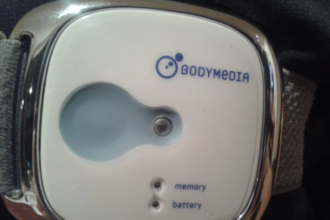Connected health has enormous capacity as a tool to promote behavior change (in my opinion better than any other toolset we have). However when poorly implemented, it fails like any other poorly implemented strategy. In 18 years, have I learned all there is to know about connected health implementation? Surely not or I’d retire and find something else to do.
Connected health has enormous capacity as a tool to promote behavior change (in my opinion better than any other toolset we have). However when poorly implemented, it fails like any other poorly implemented strategy. In 18 years, have I learned all there is to know about connected health implementation? Surely not or I’d retire and find something else to do. I gain new insights every day. However, I do see a set of reproducible outcomes when programs have certain design characteristics, so I thought I’d write about them for a few posts. Rather than make this a textbook-like rendition, I am going to use particular examples from the marketplace that illustrate these principles done well.
Chances are, even if you follow the connected health industry, you have not heard of a firm called Fitlinxx. This is a small Massachusetts based firm and they’ve always been a bit ahead of the marketplace when it comes to activity monitoring. Their technology illustrates two guiding principles:
Wear and Forget Sensors and
Automatic Data Upload
(Both of these guiding principles are subservient to the importance of objective data collection and the need to avoid data self-entry when possible.)
The first Fitlinxx device was called the actiped, and it clipped on your shoe to measure step counts. The device has a low-energy radio in it and a watch battery providing about 3 months of device life. It pairs with a USB antenna that you put in your computer. Anytime you walk by any such USB antenna, the Actiped automatically uploads your step count to the Cloud. These data can be viewed on the Fitlixx website or through a third party partner (more on that momentarily). The device is also the most price-competitive on the market. We’ve used it for lots of activity monitoring programs at the Center for Connected Health, including our Step it Up program to encourage increased activity in children in Boston Public Schools. It works particularly well for walking programs and for group competitions because you can set up a few antennae in an environment (such as a school or workplace) and get automatic step counts uploaded.
As good as it is, the Actiped has been criticized for two reasons. One reason is the need to clip in on your shoe. This is inconvenient, particularly for women whose shoe styles often do not lend themselves to a clip on pedometer. The second reason is that it only tracks steps, so you get no credit for cycling, treadmill, elliptical or swimming, all popular work out activities.
I was excited to learn that Fitlinxx recently released an upgraded device, the Pebble. It has different technology and different firmware allowing it to track all of the activities mentioned above and to be worn on the belt instead of the shoe. In my opinion, these improvements mark it as the best overall value in activity monitoring. In fact, I swam laps both Saturday and Sunday and, wearing it on my wrist, saw activity spikes recorded on both days.
One clips the sensor on and as long as you are in 30 feet or so of a USB antenna, your activity is effortlessly uploaded. As of today, consumers cannot order a Pebble directly from Fitlinxx, as they only distribute through partners. I met with several of their executives the other day and suggested they reconsider as they have a great product.
Activity is the quintessential example of an objective connected health measure. If you wear a device like the Actiped or the Pebble and periodically check your activity level, inevitably insights occur. For most of us, the insight is, “Gee, I am not that active on a given day.”
Insights are great, but for the vast majority of folks, more is needed to achieve and sustain behavior change.
This is where motivational psychology comes in.
My favorite example of a company that understands how to properly use motivational psychology is Healthrageous. (For full disclosure: you should know that Healthrageous was spun out of our Center just over two years ago, and that I am a minority share holder and chair of their Scientific Advisory Board).
Many companies favor one motivational technique above all others (social networking, rewards/incentives, games and coaching are the four categories). These companies all report good success too, with say 30-50% of any population. But what about the other 50-70%? Chances are, this segment of the population doesn’t personally respond to that particular flavor of motivational psychology. Healthrageous has a system that offers all of these techniques to best suit the needs and preferences of individuals. Eventually, the company will be able to predict which mix is maximally motivational to each individual and craft customized messaging to achieve the goal of sustained behavior change. Their data is impressive.
To sum it up then, wear and forget sensors generating automatically uploaded data provide feedback loops and insights whereas customized motivational psychology tools create the environment for sustained behavior change.
![]()





